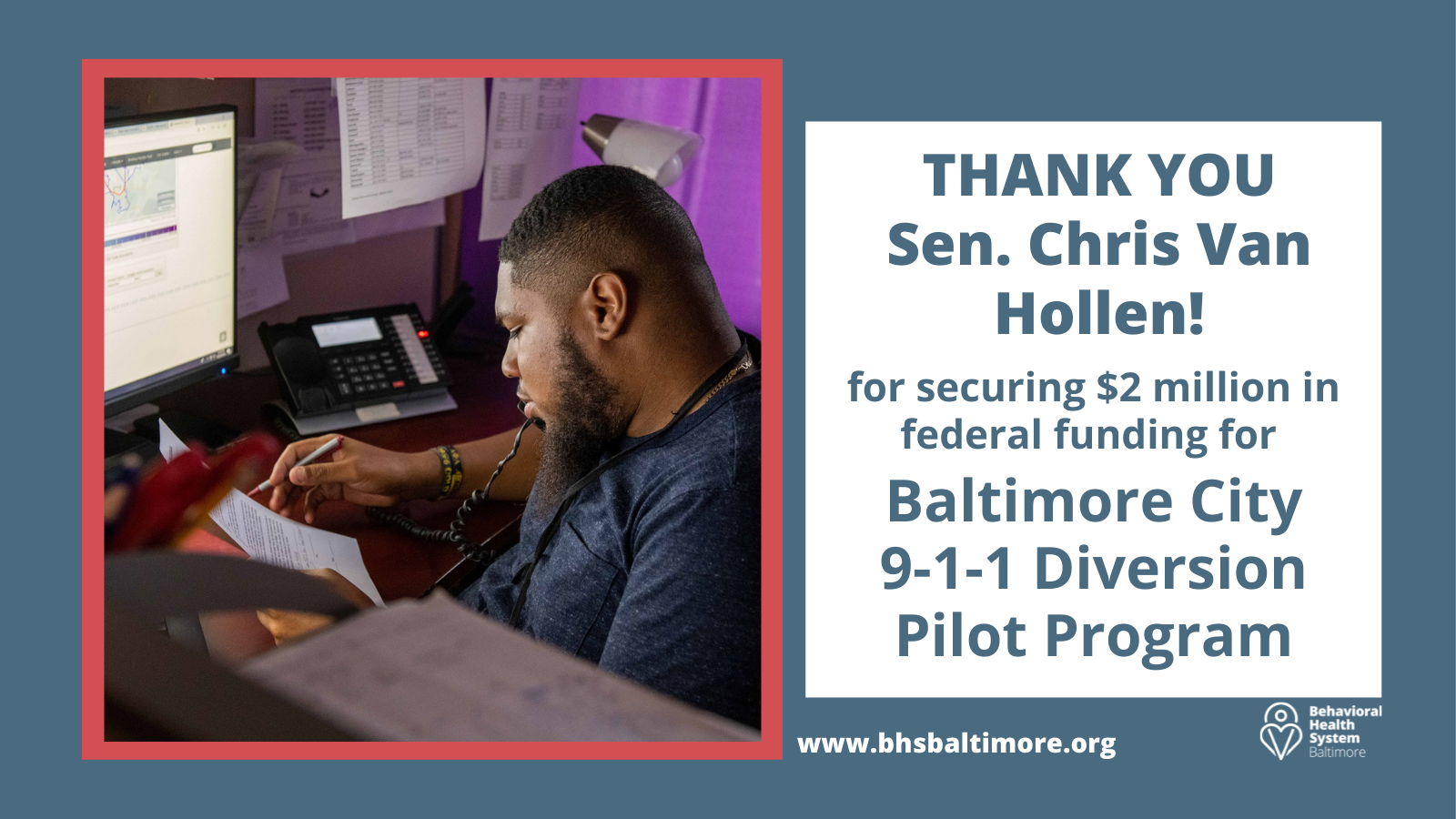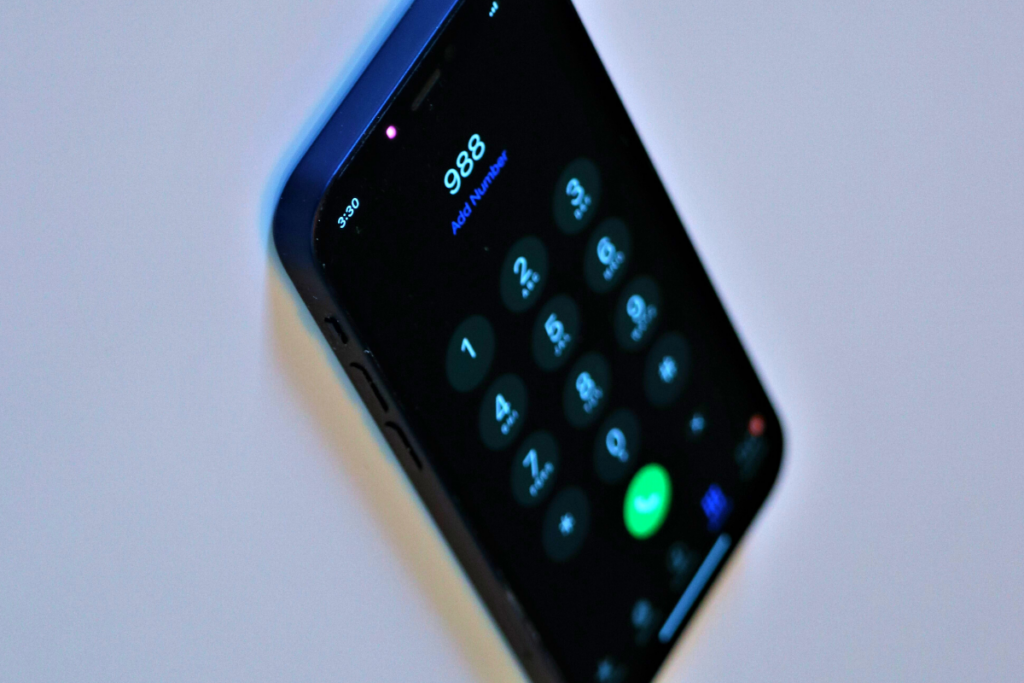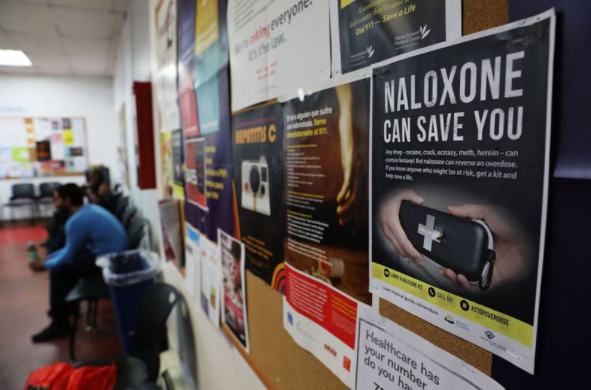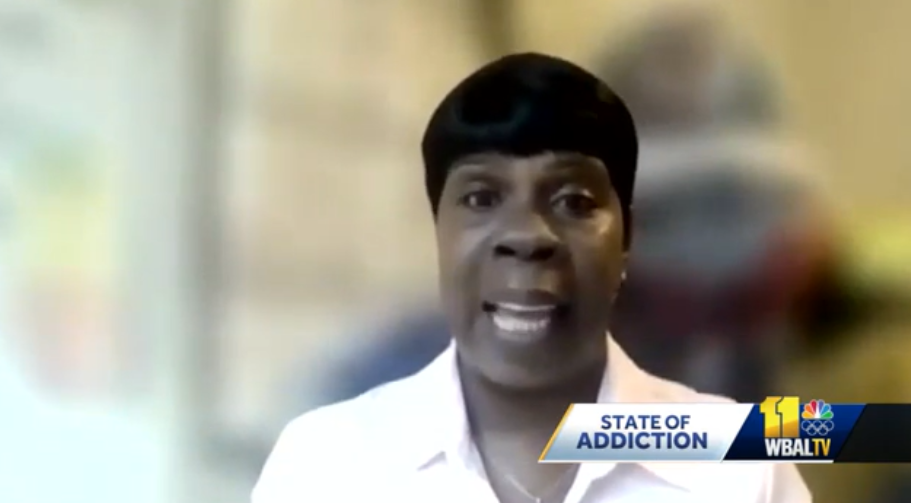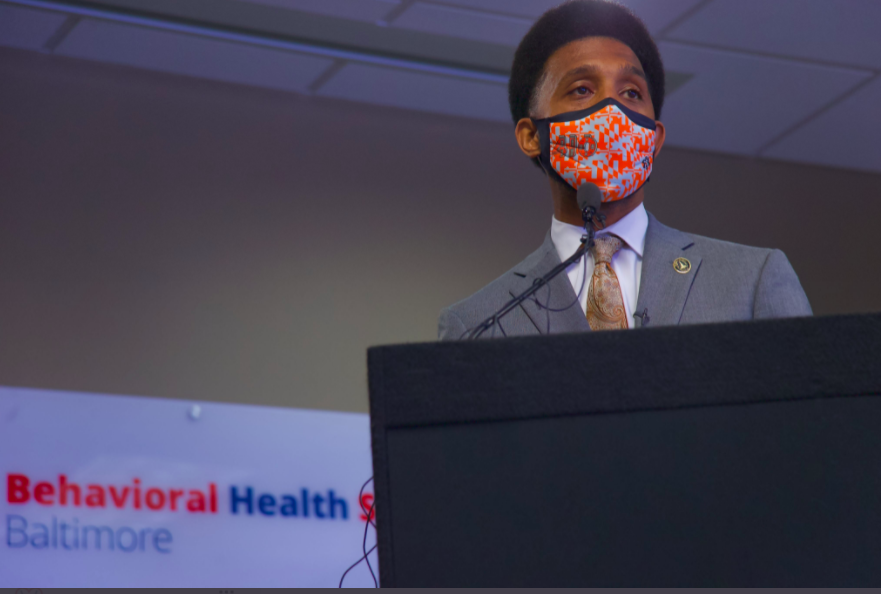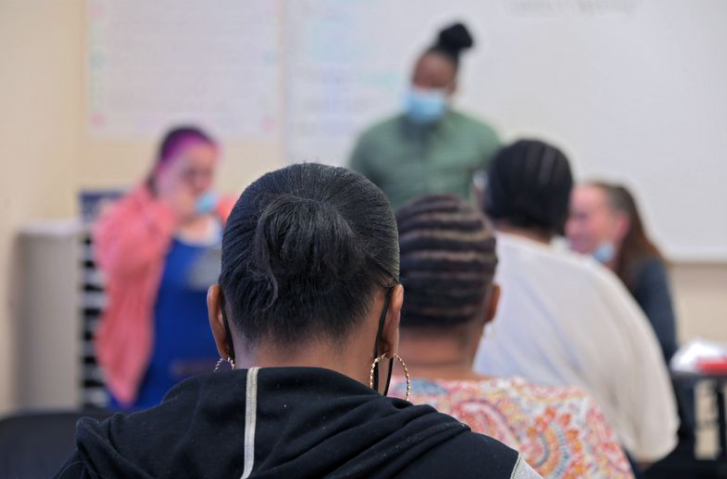Content Warning: This article includes mentions of fatal opioid overdose
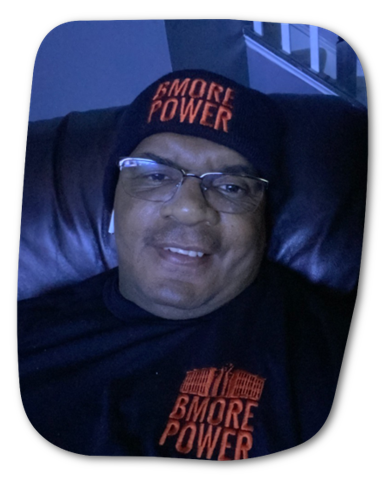 Darryl Burrell has made a career of working to advance harm reduction in our community, through needle exchange, connecting people to STI testing, and currently, through overdose prevention outreach. As Bmore POWER Coordinator, he works alongside the Bmore POWER team connecting people to resources and encouraging people who use drugs to always carry Narcan, test their drugs for fentanyl and “Go Slow.”
Darryl Burrell has made a career of working to advance harm reduction in our community, through needle exchange, connecting people to STI testing, and currently, through overdose prevention outreach. As Bmore POWER Coordinator, he works alongside the Bmore POWER team connecting people to resources and encouraging people who use drugs to always carry Narcan, test their drugs for fentanyl and “Go Slow.”
Many people in Baltimore City are familiar with Bmore POWER, but what does the day-to-day look like?
We have about 20 sites across the city where we do outreach and attend community events to hand out Narcan, fentanyl test strips, info about treatment and other behavioral health resources. And we didn’t stop during COVID. We started handing out masks and hand sanitizers too.
We look to connect with people who might be on drugs – we can connect them with treatment the same day if they want or just listen. We can also offer support to family members or friends concerned about a loved one.
And, when fentanyl showed up, we created the Go Slow campaign.
Tell me about how the Go Slow campaign started.
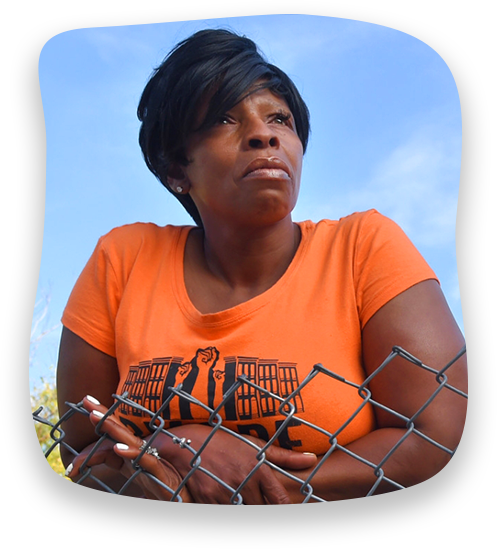 In 2017, Phaedra Ward, a member of Bmore POWER who passed away, became adamant about creating a campaign to let people know about the danger of fentanyl. She was heartbroken by what it was doing to the community. So, with some support from Johns Hopkins on creating materials, Bmore POWER came up with the campaign and started spreading the word. Everybody understood the seriousness of the campaign when we started.
In 2017, Phaedra Ward, a member of Bmore POWER who passed away, became adamant about creating a campaign to let people know about the danger of fentanyl. She was heartbroken by what it was doing to the community. So, with some support from Johns Hopkins on creating materials, Bmore POWER came up with the campaign and started spreading the word. Everybody understood the seriousness of the campaign when we started.
We launched the campaign in 2019 and our job was educate the community and to get the test strips out, so we started adding the strips with Narcan bags. I remember that Phaedra received an award for her work on the Go Slow campaign right before she passed away. We pushed the campaign harder after that.
What does it mean to Go Slow?
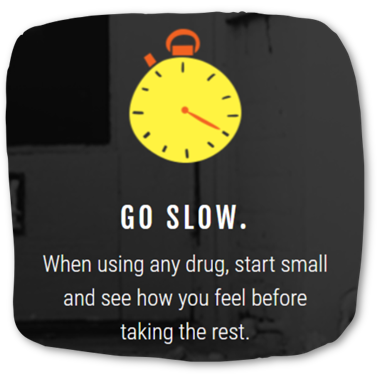 Fentanyl is way stronger than regular heroin, and we knew that some people aren’t going to stop using just because their drugs tested positive for Fentanyl, so we wanted to give them another option. Like, if they was injecting, try injecting just a little bit in to see how it feels. If they we’re sniffing it, sniff half a pill.
Fentanyl is way stronger than regular heroin, and we knew that some people aren’t going to stop using just because their drugs tested positive for Fentanyl, so we wanted to give them another option. Like, if they was injecting, try injecting just a little bit in to see how it feels. If they we’re sniffing it, sniff half a pill.
Fentanyl makes it hard for people to use drugs the way they been using, so we try to suggest testing the drugs, adjusting the amount, taking it slow and keeping Narcan nearby.
How did the community respond?
When we first started it, we was getting a lot of different reactions. Some people thought we were promoting drug use. But it was a harm reduction approach. People just look down on people who use drugs. But, we know people use and we know some people aren’t going to stop, so Bmore POWER went at it a different way. It’s unique. Some people in the community was receptive and some people were negative, but negative and positive conversation is still a conversation. It all depends on how you deal with that conversation.
How did Bmore POWER deal with those different conversations?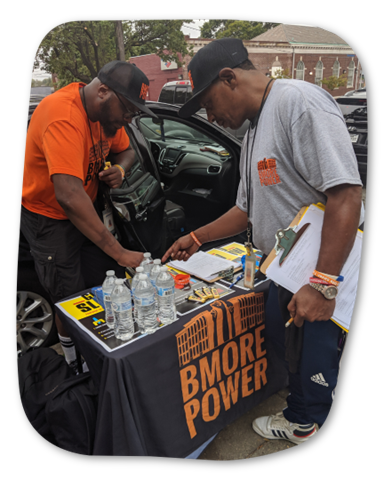
Everyone in Bmore POWER has lived experienced, so we just try to not look down on people in the community. We want them to understand that we understand, we’ve been there and done that. We don’t want to come and disrupt, we’re there to help. And, not there as a form of police, but as former drug users.
And now, we have been accepted in the community, we can go anywhere and be accepted. We will help anyone willing to engage with us.
How has the Go Slow campaign helped the community?
I think the campaign woke a lot of people up, but a lot of people still don’t understand. Some people don’t want to test their drugs, or they want Fentanyl in there because they’re hooked on it or they’re afraid of withdrawal. Since the campaign started, we’ve also lost a lot of members. We have members who were still using at the time and some of them didn’t make it.
Fentanyl is here, and it is here to stay, so we continue spreading the word and getting Narcan and test strips into the community.
What do you hope for the future of Bmore POWER and Baltimore?
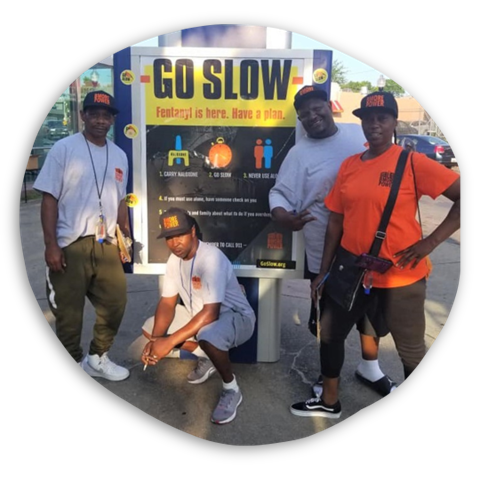 We have to keep going into community and having a conversation about this stuff because it looks normal for a person to go and get in a line to be served drugs. It’s still the same lines, but sometimes the lines are a lot longer than they used to be. And you might talk to twenty people, and they might not hear you, but sometimes you’ll talk to someone who says “man, I’m tired, I just want to get into treatment.”
We have to keep going into community and having a conversation about this stuff because it looks normal for a person to go and get in a line to be served drugs. It’s still the same lines, but sometimes the lines are a lot longer than they used to be. And you might talk to twenty people, and they might not hear you, but sometimes you’ll talk to someone who says “man, I’m tired, I just want to get into treatment.”
Baltimore has been under this cloud for so long, everybody been experiencing it. I’ve experienced but, I try to explain that if I can make it, anybody can make it – this is something you can overcome. I think that is a testament to me and other members of Bmore POWER. Working on the Go Slow campaign has changed me in ways I couldn’t imagine. I am super proud to be a part of Bmore POWER with ups and downs, I mean through it all.
Learn more about Go Slow, Bmore POWER and find resources here.





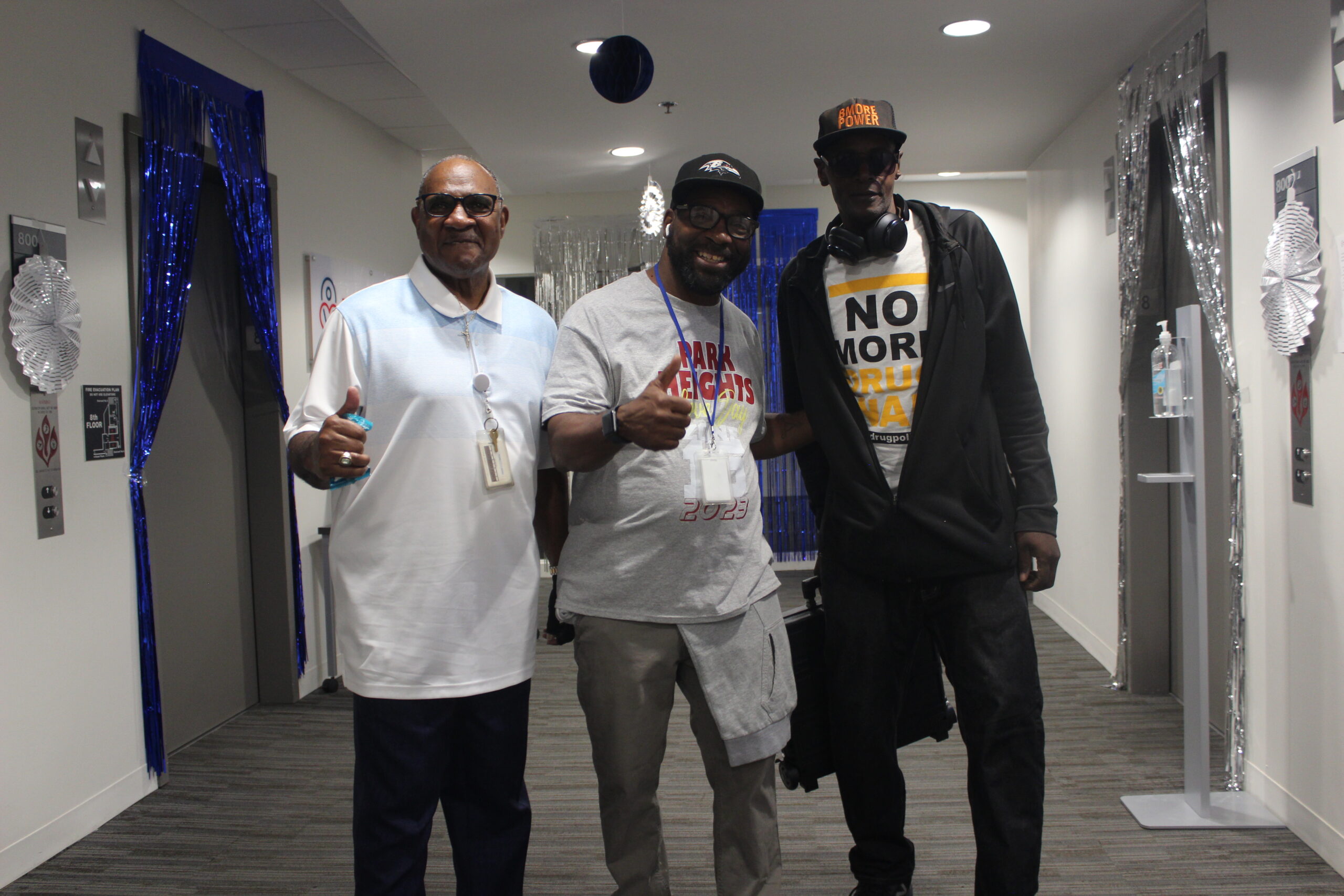
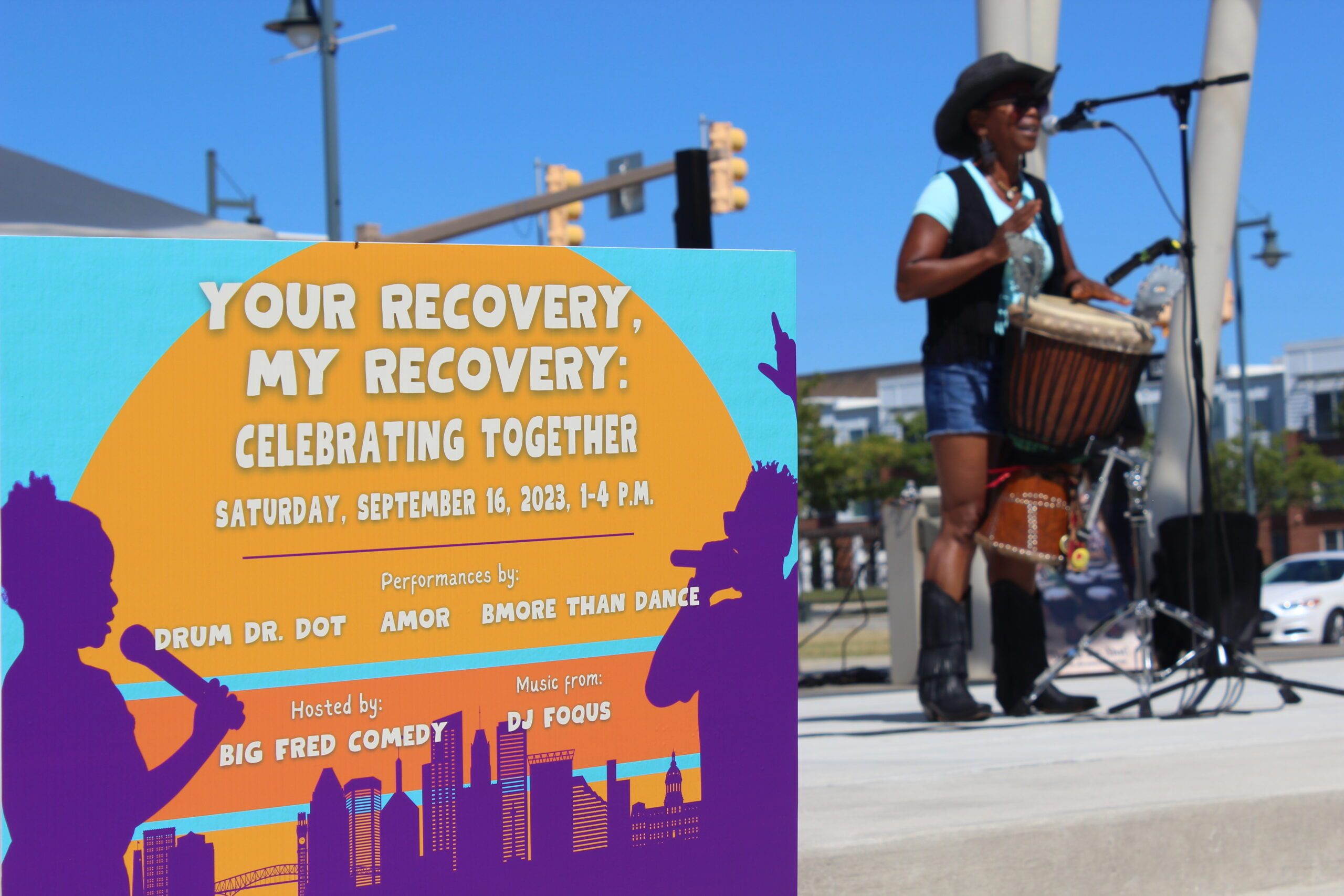









 Thank you to every provider, performer and community member who made BHSB’s 7th annual Recovery Month celebration a success.
Thank you to every provider, performer and community member who made BHSB’s 7th annual Recovery Month celebration a success. 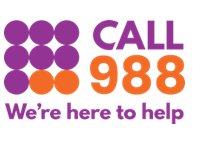
 Darryl Burrell has made a career of working to advance harm reduction in our community, through needle exchange, connecting people to STI testing, and currently, through overdose prevention outreach. As Bmore POWER Coordinator, he works alongside the Bmore POWER team connecting people to resources and encouraging people who use drugs to always carry Narcan, test their drugs for fentanyl and “Go Slow.”
Darryl Burrell has made a career of working to advance harm reduction in our community, through needle exchange, connecting people to STI testing, and currently, through overdose prevention outreach. As Bmore POWER Coordinator, he works alongside the Bmore POWER team connecting people to resources and encouraging people who use drugs to always carry Narcan, test their drugs for fentanyl and “Go Slow.” In 2017, Phaedra Ward, a member of Bmore POWER who passed away, became adamant about creating a campaign to let people know about the danger of fentanyl. She was heartbroken by what it was doing to the community. So, with some support from Johns Hopkins on creating materials, Bmore POWER came up with the campaign and started spreading the word. Everybody understood the seriousness of the campaign when we started.
In 2017, Phaedra Ward, a member of Bmore POWER who passed away, became adamant about creating a campaign to let people know about the danger of fentanyl. She was heartbroken by what it was doing to the community. So, with some support from Johns Hopkins on creating materials, Bmore POWER came up with the campaign and started spreading the word. Everybody understood the seriousness of the campaign when we started.  Fentanyl is way stronger than regular heroin, and we knew that some people aren’t going to stop using just because their drugs tested positive for Fentanyl, so we wanted to give them another option. Like, if they was injecting, try injecting just a little bit in to see how it feels. If they we’re sniffing it, sniff half a pill.
Fentanyl is way stronger than regular heroin, and we knew that some people aren’t going to stop using just because their drugs tested positive for Fentanyl, so we wanted to give them another option. Like, if they was injecting, try injecting just a little bit in to see how it feels. If they we’re sniffing it, sniff half a pill. 
 We have to keep going into community and having a conversation about this stuff because it looks normal for a person to go and get in a line to be served drugs. It’s still the same lines, but sometimes the lines are a lot longer than they used to be.
We have to keep going into community and having a conversation about this stuff because it looks normal for a person to go and get in a line to be served drugs. It’s still the same lines, but sometimes the lines are a lot longer than they used to be. 
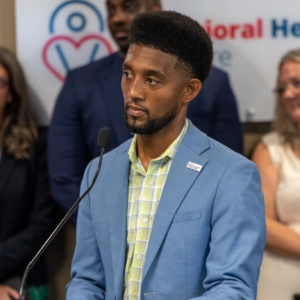 “This marks one year of the implementation of this program. It’s about matching individuals to the most appropriate resources when they are having a behavioral health crisis and avoiding unnecessary police encounters. We are leading in this work here in Baltimore.”
“This marks one year of the implementation of this program. It’s about matching individuals to the most appropriate resources when they are having a behavioral health crisis and avoiding unnecessary police encounters. We are leading in this work here in Baltimore.” 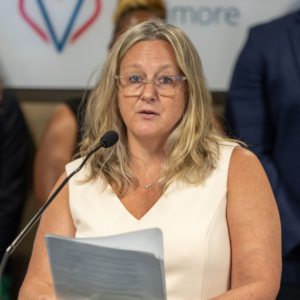 “With this funding, we will expand the pilot to serve more people, in particular children and youth. More than ever, children and youth in our community are feeling distressed and disconnected. The federal funding will be used to create a youth-specific mobile response team that goes into the community to provide care and follow up support.”
“With this funding, we will expand the pilot to serve more people, in particular children and youth. More than ever, children and youth in our community are feeling distressed and disconnected. The federal funding will be used to create a youth-specific mobile response team that goes into the community to provide care and follow up support.”